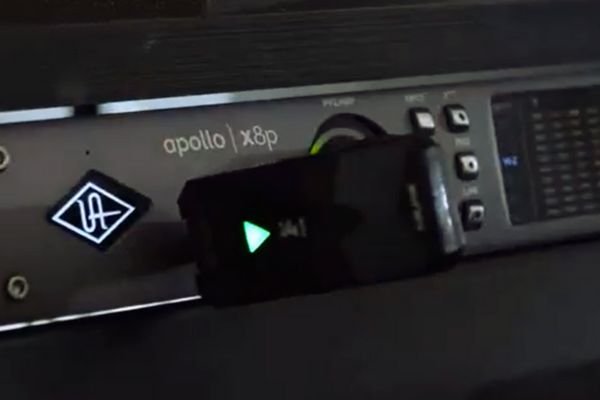With the advancement of technology, TransmitterTransmitterevolved rapidly in recent years. A wireless system keeps you free from cable restriction and allows guitarists free movement across the stage. But without the wire, how does wireless guitar system work? How the signal transmits so efficiently?
It’s so simple; a wireless guitar system mainly consists of two components: a transmitter and a receiver. These systems use a range of frequencies to transmit your guitar’s signal without compromising its quality. Let me break through all technical jargon in the easiest way possible so you are informed how a wireless guitar system works so flawlessly. Let’s get started.
How Does Wireless Guitar System Work?
Guitar wireless systems operate on the same basic principle as other wireless devices. They consist of two main components: a transmitter and a receiver. The transmitter is like the wingman for your guitar, which takes the analog signal from the guitar and converts it into a digital signal. The transmitter sends the digital signal to the receiver using a specific frequency band.

Now, the receiver receives the digital signal and works its magic to transform it back into an analog format that your trusty amplifier can understand. Finally, the amplifier ensures that the original sound and tone remain intact.
See Also: Are Wireless Guitar System Worth It
The ever-evolving digital audio transmission technology has managed to keep the latency at the lowest level. The latency in modern wireless guitar systems is so low that you’ll hardly notice it. It’s typically measured in milliseconds (ms), which is just a fancy way of saying “super-duper fast.” It means with a wireless guitar system; you won’t feel any lag or disruption that could throw off timing or expression.


How Do Wireless Guitar System Work With Pedals?
Using wireless systems with guitar pedals is a breeze! All you need to do is connect the receiver at the beginning of the pedal chain instead of plugging it directly into the amp. In fact, playing with pedals might even become easier because you can tap into the pedal from the effects chain.
Here’s the lowdown: you might notice a slight difference in sound compared to using a standard guitar cable. Nothing major, just a subtle nuance. So, it’s a good idea to make some tweaks to the settings on your pedals to dial in that perfect tone. Don’t worry; it won’t require a complete overhaul.
How Do Wireless Guitar System Work Acoustic Guitar Chords?
Wireless guitar systems typically operate on specific radio frequencies, much like a radio station. When you play chords on the acoustic, the wireless system captures the strings’ vibrations through the pickup or microphone. The wireless system then processes those vibrations into an electrical signal, just like a wired connection would. The wireless transmission takes this electrical signal, turns it into a radio signal, and sends it to the receiver. The receiver then converts the radio signal back into an electrical audio signal, and the amp amplifies that signal. This whole process happens in real time so you can play the chords without any noticeable delay.
A wireless system doesn’t affect how you play or form the chords. It simply takes the electrical signal from your guitar and transmits it wirelessly. So, whether you’re strumming open chords, playing complex fingerstyle patterns, or anything in between, the wireless system captures and transmits the acoustic’s sound. Of course, different wireless guitar systems may have different techs, but the basic principle remains the same.
Final Words
Hope you’ve got all the answers about how does wireless guitar system work. From revolutionizing communication to playing the guitar in every aspect of our lives, a wireless system has truly transformed the way we live. It has transformed the amplifying system and stage performances without the trouble of cables. With advancements in signal processing, modern wireless systems boast near-zero latency. It means your lightning-fast solos and intricate fingerpicking are relayed in real-time, so you can stay perfectly in sync with your mates hassle-free.
